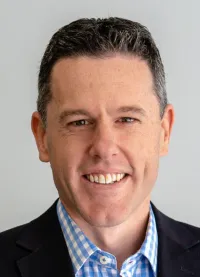Blogs

Streamlining Task Management for Specialist Medical Practices
In specialist medical practice, precision, accuracy, and timely completion of tasks can make a significant difference. For Australian doctors who own specialist medical practices, juggling clinical responsibilities alongside administrative tasks can be overwhelming. Managing patient care, coordinating with secretarial staff, handling appointments, and ensuring compliance with healthcare regulations are just a few of the daily tasks that demand attention. This is where a robust task management system like Asana becomes invaluable, helping doctors streamline operations and improve communication within their practices.
This is most valuable when a practice has more than one secretary. Without an efficient task management system, there is a lack of accountability and disorganisation in the completing of tasks. This also facilitates secretaries not working in the same location allowing your practice to utilise remote or virtual medical secretaries.
The Importance of Efficiency in Specialist Medical Practices
For specialist medical practices, efficiency isn’t just about saving time; it’s about delivering the highest standard of care to patients. Every task, from scheduling patient appointments to managing medical records and processing billing plays a critical role in the smooth functioning of the practice. When tasks are managed effectively, doctors can focus more on patient care rather than getting bogged down by administrative burdens.
Traditional methods of managing tasks, such as using email or paper-based systems, are not only outdated but can lead to errors and inefficiencies. Email threads can become confusing, with important details buried in the midst of routine communications. Paper-based systems, while still used by some, lack the agility and accessibility needed to manage the complexities of a modern medical practice. Asana offers a solution that is both efficient and tailored to the needs of specialist medical practices.
Why Asana for Medical Practices?
Asana is a task management tool designed to bring order and clarity to complex workflows. It enables specialist medical practices to create projects, assign tasks, set deadlines, and monitor progress, all within a single platform. But beyond task management, Asana significantly enhances communication, making it a crucial tool for any medical practice.
1. Centralised Communication for Clearer Coordination
In a medical practice, effective communication is essential. Miscommunication can lead to scheduling errors, missed follow-ups, and even potential risks to patient safety. Relying on email for internal communication can be inefficient and error-prone. Important messages can get lost in overflowing inboxes, or crucial details may be overlooked in lengthy email chains.
Asana addresses this issue by centralising communication around specific tasks or projects. Instead of sifting through numerous emails, doctors and staff can refer directly to the task in Asana. All related conversations, files, and comments are attached to the task, making it easy to access and review relevant information. This not only saves time but also reduces the likelihood of important details being missed.
2. Enhanced Collaboration Among Staff
Collaboration is critical in any healthcare setting, where multiple professionals may be involved in the care of a single patient. Asana facilitates seamless collaboration by allowing team members to comment on tasks, tag colleagues, and assign subtasks. This ensures that everyone knows their responsibilities and can work together effectively.
For example, a doctor can create a task in Asana for a follow-up appointment and assign it to the appropriate secretary or administrative staff. Any necessary details, such as patient history or specific instructions, can be added as comments. This level of collaboration helps ensure that nothing falls through the cracks and that patient care remains the top priority.
3. Prioritising and Organising Tasks
Specialist medical practices often have to manage a variety of tasks, from patient consultations to administrative duties. Asana allows practices to prioritise tasks, set deadlines, and create workflows that reflect the urgency and importance of each task. This helps practices stay organised and ensures that critical tasks are completed promptly.
By using Asana’s visual tools, such as the board view or timeline view, practices can quickly assess the status of various tasks and projects. This visibility allows for better decision-making and helps doctors and staff manage their workload more effectively.
The Drawbacks of Email-Based Task Management
Using email as the primary means of task management can lead to inefficiencies and mistakes. Important messages can be buried in crowded inboxes, leading to missed deadlines and communication breakdowns. Moreover, email threads can become cluttered with irrelevant information, making it difficult to keep track of what’s important.
In a specialist medical practice, where accurate and timely communication is vital, the risks of relying on email are too high. Asana offers a more reliable and efficient way to manage tasks and communication, ensuring that everyone is on the same page.
Conclusion: Embracing Asana for Better Task Management in Medical Practices
For Australian doctors managing specialist medical practices, Asana provides a solution that goes beyond traditional task management tools. By centralising communication, enhancing collaboration, and allowing for effective task prioritisation, Asana helps practices operate more smoothly and efficiently.
Moving away from email-based communication to a dedicated task management system like Asana can lead to significant improvements in how tasks are handled, reducing errors and improving patient care. In an environment where every detail matters, Asana is an invaluable tool for ensuring that tasks are managed effectively, allowing doctors to focus on what they do best: providing exceptional care to their patients.



